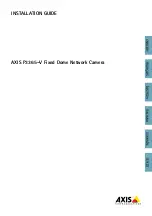
2-10
Cisco 7304 Network Service Engine Installation and Configuration
OL-3967-01
Chapter 2 NSE-150 Overview
USB Interface
The NSE-150 supports the following 1000BASE-BX SFP modules:
For more detailed information on the 1000BASE-BX SFP modules, see the
Cisco SFP Optics For
Gigabit Ethernet Applications Data Sheet
.
USB Interface
The NSE-150 USB interface is not usable at this time. Cisco Systems plans on making the USB interface
available in a later Cisco IOS release as part of a future enhancement.
Fast Ethernet Management Port Connections
The NSE-150 has an RJ-45 media port that provides 10/100-Mbps connectivity. It is not used for regular
traffic. It is used to connect to a network management station and for downloading images. You should
not switch to or from this port.
To identify the Fast Ethernet cable type, hold the two ends of the cable next to each other so you can see
the colored wires inside the ends. The straight-through wire type has colored wires in the same sequence
at both ends. In the crossover wire type, the first colored wire at the far left is the third colored wire at
the other end. The second colored wire at the far left is the sixth colored wire at the other end.
The Fast Ethernet cable pinouts used for the NSE-100 are identical to the Fast Ethernet cable pinouts for
the Ethernet cable used on the NSE-150 Fast Ethernet Management Port. For information about these
pinouts, see the “NSE-100 Fast Ethernet RJ-45 Pinouts” section of the
Cisco 7304 Installation and
Configuration Guide
.
Console and Auxiliary Ports
The NSE-150 has a DCE-mode console port for connecting a console terminal, and a DTE-mode
auxiliary port for connecting a modem or other DCE device (such as a CSU/DSU or other router) to your
router. The NSE-150 uses RJ-45 ports for both the auxiliary and console ports. Both the console and the
auxiliary ports are asynchronous serial ports; any devices connected to these ports must be capable of
asynchronous transmission. (Asynchronous is the most common type of serial device; for example, most
modems are asynchronous devices.)
Before connecting a terminal to the console port, configure the terminal to match the router console port
as follows: 9600 baud, 8 data bits, no parity, 2 stop bits (9600 8N2). After you establish normal router
operation, you can disconnect the terminal.
The following tables show the console and auxiliary port signals:
Table 2-8
1000BASE-BX SFP Product Numbers and Descriptions
Product Number
Product Description
GLC-BX-D
1000BASE-BX10-D downstream
bidirectional single fiber; with digital
optical monitoring (DOM)
GLC-BX-U
1000BASE-BX10-U upstream
bidirectional single fiber; with digital
optical monitoring (DOM)
















































